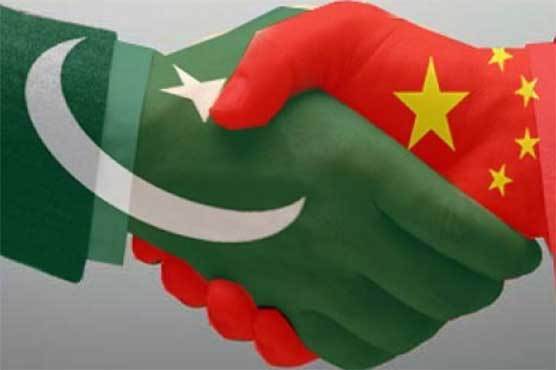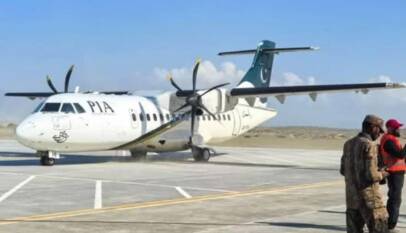CPEC symbiosis offers a number of benefits to China and Pakistan
The China-Pakistan Economic Corridor (CPEC) comes with a bundle of benefits for both Pakistan and China. In this win-win synergy, Gwadar Port will be the keystone to lay benefits for both states by providing the international sea route to South West and Central Asia. Gwadar is located at the crossroads of three sub-regions giving it an edge on the energy transit. Port is aimed to reduce the travel distance between Europe and the Western Chinese region Xinjiang. It will boost trade between the Persian Gulf and Africa to Western and Northern China by minimising the travel distance up to several thousand kilometres. Chinese oil imports' transportation will be cut short to 2 days from 30 days after the development of energy pipelines. Gwadar Port has strategic significance too, as, in time of war, China would not be dependent on vulnerable Malacca Strait. Pakistan's low labour cost is another attraction for Chinese businessmen. For Pakistan, CPEC is a manifestation of "Look East" policy which is vital for the socio-economic development of the Gilgit Baltistan and Balochistan regions. Furthermore, CPEC will bring billions per annum in terms of transit revenue after the successful channelising of the corridor. Also, it will lessen the load on Karachi and Bin Qasim ports, giving momentum to Pakistan's seaborne trade. Pakistan will become a country with a chain of universal logistics' standards, promoting business and trade. CPEC projects will not only develop energy storage facilities but will also introduce hydro-power through constructing medium-sized HPP dams. CPEC is also promising for the exploration and development of mineral resource sector of Pakistan besides developing skilled human resource.
Introduction: CPEC is a flagship project of Chinese leadership’s overarching initiative of One Belt One Road and envisions connecting Kashgar with Gwadar Deep Sea Port through highways, railways and pipelines. What makes this corridor unique is the fact that it affords the vital link between Eurasian land routes and maritime silk routes envisaged under OBOR. Therefore, Pakistan serves as an International Interchange enabling a great strategic advantage to be the hub for international trade and integration of economies of Asia, Africa and Europe. This geo-strategic advantage needs to be harnessed on the basis of mutuality of interests to translate into geo-economics gains
Strategic and Economic Context : Gwadar Port is the cornerstone of the whole gambit and Gateway to South West and Central Asia with its strategic significance extending from Persian Gulf through the Indian Ocean to South East Asia and the Far East. Almost 35 to 40% of sea borne oil shipment transits through Strait of Hormuz. Gwadar located at cross roads of three sub-regional systems, bridges the gap for transportation of this vital source of energy. Therefore, it retains fundamental role in the future economic prospects of about 20 countries of Central Asia, South Asia and China by providing economically viable, cost effective and shortest route for transit and supply. The Corridor will reduce distance between Europe and Western China to less than half, thus saving time and billions of dollars on a yearly basis.
Strategic & Economic Gains for Pakistan & China: CPEC is a classic manifestation of convergence of geo-strategic and geo-economic interests of the two countries with socio-economic and diplomatic relations fostered through vicissitudes of time. While complementarity of the economies would serve the economic interests of the two states, development of mutually beneficial infrastructure will further harmonize the efforts to counter common adversaries. Envisaged advantages and gains for the two sides are as under: (i) Economic development of relatively backward western regions especially Xinjiang will bring peace and stability facilitating trade with Central Asia to meet the growing energy needs. (ii) CPEC would afford China shortest access to its markets in Asia, Europe and beyond. Use of Gwadar Port will facilitate trade from Persian Gulf and Africa to Western and Northern China reducing the distance by several thousand kilometres (almost 12500 Km) and slashing the cost by billions of dollars. (iii) Almost 80% of China’s oil is currently transported from Strait of Malacca to Shanghai. Transportation time of oil imports from the Middle East and Africa will be reduced from over 30 days to just 2 days after completion of pipeline projects and will not be dependent on shipping through Straits of Malacca and the vulnerable maritime routes. Besides economic factor, presence in Gwadar is of great strategic value for China and would be a great strategic advantage in case of war in Asia and blockade of Strait of Malacca. (iv) For the Chinese investors, Pakistan has lot to offer in multiple sectors because of low labour cost. (v) In the strategic context, CPEC conforms to Pakistan’s security paradigm and “Look East” policy and will serve towards furtherance of strategic partnership. (vi) Located at the crossroads of huge supplying and communicating markets, fully functional Gwadar Port linked with China and Central Asia can play a vital role in economic revival of Pakistan. (vii) It also affords a great opportunity for socio-economic development of Gilgit-Baltistan and Balochistan Province. (viii) Pakistan would benefit through investment from China for development of requisite infrastructure and to bridge energy shortfall. This will help Pakistan in realizing the potential to become a regional trade hub and energy corridor thereby bringing huge transit revenues and employment opportunities. (ix) Even the conservative estimates show projected possible revenues of over 100 billion dollars on account of transit revenue per annum in long term besides creating employment opportunities in hundreds of thousands. (x) With 95% of Pakistan’s trade through sea and economy heavily dependent on sea trade, development of Gwadar Port and its connectivity is of extreme significance to reduce load on Karachi and Bin Qasim ports for furtherance of Pakistan’s Sea borne trade.
Key Imperatives for Pakistan: Having seen the immense potential; what should be our focus to make the most of this opportunity for seeking sustained economic development and securing our socio-economic future; Improvement and development of requisite infrastructure is absolutely essential. Key imperatives in this context are: (a) Regional connectivity by linking major ports of the country with trade routes through highways, railways and oil pipelines. (b) Development of world class efficient logistic chain and Infrastructure and trade facilitation. (c} Development of special economic industrial zones and transit facilities along the Corridor.( d) Increasing oil storages connected through pipelines. (e) Water and hydro-power development including mega dams on Indus Cascade coupled with medium sized HPPs. (f) Exploration and development of mineral resources to fund the economic programme. (g) Last, but not the least is development of skilled human resource.
Conclusion: CPEC is a win win synergy for both the nations and the region. It is a rare opportunity for Pakistan to realize its true strategic and economic potential. Multi-sectoral initiatives are being vigorously pursued in sync with our socio-economic imperatives. This of course, if not gigantic, is at least a colossal undertaking requiring the private sector and financial institutions to come forward and join hands for expeditious implementation.
Chinese Ambassador highlights significance of Third Plenary Session for China-Pakistan cooperation
The Third Plenary Session of the 20th Central Committee of the Communist Party of China ha…












